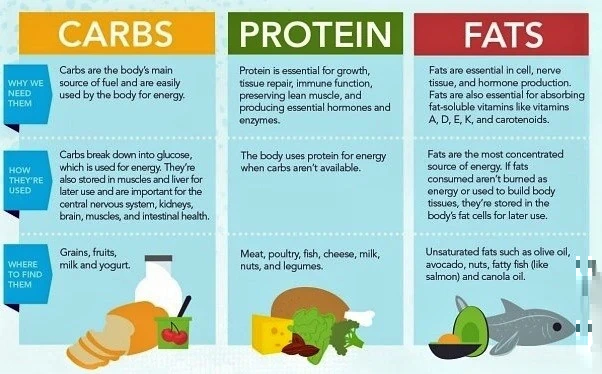Chicken breast is a popular protein choice for many people, thanks to its lean and versatile nature. Whether you’re looking to build muscle, lose weight, or simply incorporate healthier options into your diet, chicken breast can be a nutritious addition to your meals.
One of the questions that often comes up when considering chicken breast as a protein source is how many calories are in a 6 oz chicken breast? In this blog, we will delve into the caloric content of a 6 oz chicken breast and explore its nutritional composition, cooking methods, and the impact of skin and bone on calorie count. Understanding these factors can help you make informed decisions about incorporating chicken breast into your diet. So, let’s break it down!
Understanding Calories in Chicken Breast
When it comes to understanding the caloric content of chicken breast, it’s important to note that the calorie count can vary based on factors such as cooking method, presence of skin, and bone-in or boneless options.

However, in general, skinless chicken breast is a lean protein option that is relatively low in calories. By removing the skin, which is high in fat, you can significantly reduce the caloric content of chicken breast.
What Constitutes a 6 oz Chicken Breast?
A 6 oz chicken breast may not look much different from other cuts of chicken, but the weight of the breast can impact its protein content and caloric value. A 6 oz chicken breast is a significant source of lean protein, making it an excellent choice for those looking to increase their protein intake. Understanding portion sizes can also aid in managing calorie intake, making it easier to reach your dietary goals. Additionally, the protein content of a 6 oz chicken breast makes it an ideal option for workout routines that require ample protein for muscle repair and growth.
Key points:
- A 6 oz chicken breast is a significant source of lean protein.
- The weight of a chicken breast can impact its protein content.
- Understanding portion sizes can aid in managing calorie intake.
- The 6 oz chicken breast provides substantial protein for workout routines.
- Cooking a 6 oz chicken breast boneless and skinless reduces calorie count.
The Role of Cooking Methods on Caloric Content
The method of cooking chicken breast can also impact its caloric content. For example, grilling chicken breast can yield different calorie content compared to roasting or baking. When cooked skinless and boneless, chicken breast prepared in an air fryer, grilled, or roasted remains a relatively low-calorie option.
These cooking methods often require little to no added fats, promoting a healthier overall meal. By avoiding deep frying or breading, you can keep the caloric content of chicken breast to a minimum. Here are a few cooking methods to consider when preparing your chicken breast:

- Grilling: Grilling chicken breast imparts a smoky flavor while allowing excess fat to drip away, resulting in a lower calorie content.
- Air Fryer: Cooking chicken breast in an air fryer requires little to no oil, making it a healthier cooking method that helps retain the chicken’s nutritional value.
- Roasting: Roasting chicken breast in the oven allows it to cook evenly and retain its natural juices without the need for added fats.
- Key points:
- Grilling chicken breast yields different calorie content than roasting.
- The calorie count of chicken breast changes based on the cooking method.
- Air fryer cooking can alter the caloric content of chicken breast.
- The method of cooking chicken breast can impact its nutritional value.
- Different cooking methods affect the caloric content of chicken breast.
Nutritional Composition of a 6 oz Chicken Breast
In addition to being a good source of lean protein, chicken breast also offers several other essential nutrients. A 6 oz chicken breast typically contains protein, vitamins, and minerals, making it a nutritious choice for a balanced diet.
Understanding the nutritional composition of chicken breast can help you make informed decisions about your meals and ensure that you’re meeting your dietary needs. Let’s take a closer look at the macronutrients and other essential components of a 6 oz chicken breast.
Breakdown of Macronutrients
Protein is the primary macronutrient found in chicken breast, making it an excellent choice for those looking to increase their protein intake.
A 6 oz chicken breast can contain approximately 40 grams of protein, depending on cooking method, seasoning, and other factors. Protein is essential for muscle repair, growth, and overall health.

In addition to protein, chicken breast is relatively low in calories, carbs, and fat, making it a staple protein source for those following a balanced diet.
Key points:
- Chicken breast contains protein, essential for muscle health.
- The protein content of chicken breast is crucial for different workout routines.
- Chicken breast is a low-calorie, high-protein food.
- Understanding the nutrition of chicken breast can aid in meal prep.
- Chicken breast is a staple protein source with minimal carbs and fat.
Importance of Protein in a Chicken Breast
The protein content of chicken breast plays a vital role in various aspects of our health. Whether you’re looking to build muscle, lose weight, or maintain lean muscle mass, protein is an essential nutrient.
Chicken breast provides much protein, promoting muscle repair and growth. Incorporating chicken breast into your meals can aid weight loss by increasing satiety and supporting a balanced diet.
Additionally, chicken breast offers lean protein, which is important for maintaining lean muscle mass and overall wellness.

Key points:
- The protein content of chicken breast is essential for muscle repair.
- Protein from chicken breast aids in weight loss and management.
- The protein in chicken breast is vital for overall nutrition and wellness.
- Lean protein, like chicken breast, is important for maintaining lean muscle mass.
- Chicken breast protein content can aid in exercise demos and routines.
Comparison with Other Sources of Protein
Now that we understand the nutritional composition and benefits of chicken breast, let’s explore how it compares to other sources of protein. Chicken breast offers a lean protein alternative to red meat, which is often higher in saturated fat.
Reducing red meat intake and incorporating chicken breast into your meals can have a positive impact on your nutrition. When it comes to comparing chicken breast with fish, both provide valuable protein, but fish often offers additional health benefits due to its omega-3 fatty acid content.
Comparing with Red Meat
When considering different ways to incorporate protein into your diet, chicken breast offers a leaner protein alternative to red meat.
While red meat can be enjoyed in moderation, opting for chicken breast can help reduce saturated fat intake and promote a healthier lifestyle. By substituting lean chicken breast for cuts of red meat, you can make significant changes to your protein sources, impacting your overall nutrition.

Key points:
- Chicken breast offers a leaner protein alternative to red meat.
- Reducing red meat intake and incorporating chicken breast can impact nutrition.
- Knowing how chicken breast compares to red meat guides protein choices.
- Chicken breast is a leaner protein option, favorable for healthier lifestyles.
- Chicken breast protein content differs from that of red meat, affecting dietary choices.
Comparing with Fish
When comparing chicken breast with fish, it’s important to consider the protein content and additional health benefits. While both chicken breast and fish provide valuable protein, fish often contains omega-3 fatty acids, which can support heart health and reduce inflammation.
Incorporating a variety of protein sources, including chicken breast and fish, can help diversify your nutrient intake and provide a range of health benefits.
Key points:
- Understanding how chicken breast compares to fish aids in protein choices.
- The protein content of chicken breast differs from that of fish, influencing nutrition.
- Choosing between chicken breast and fish impacts protein intake and variety.
- Incorporating chicken breast or fish alters the protein sources in nutrition.
- Chicken breast protein content differs from that of fish, impacting dietary preferences.
Impact of Skin and Bone on Caloric Count
The presence of skin and bone can have an impact on the caloric count of a chicken breast.

Let’s take a closer look at how removing the skin and bone from a chicken breast can affect its caloric value, making it a leaner protein option for healthier eating.
The Caloric Difference with Skin-On
Chicken breast with skin has a higher calorie content due to the presence of fat in the skin. By consuming skinless chicken breast, you can reduce your caloric intake, making it a healthier choice.
Removing the skin from chicken breast cuts down on calories while still providing a substantial amount of protein. Skinless chicken breast is a leaner protein source, making it an excellent option for weight loss and overall wellness.
The Caloric Difference with Bone-In
Bone-in chicken breast may have a slightly higher calorie count due to the bone, but removing it can decrease the caloric content.
Boneless, skinless chicken breast offers lean protein with fewer calories, making it a healthier choice. When cooking boneless, skinless chicken breast, you can cut calories for healthier eating without compromising on nutrition. Opting for boneless, skinless chicken breast can support weight loss goals and overall wellness.
Measuring a 6 oz Chicken Breast
Accurately measuring a 6 oz chicken breast is important for tracking your calorie intake and achieving your dietary goals.

Let’s explore how you can measure a 6 oz chicken breast to ensure accurate portion sizes.
Using Kitchen Scale for Accurate Measurements
Using a kitchen scale allows for more precise measurements of ingredients, including chicken breast. Accurate measurements can help you track your calorie intake and achieve your dietary goals.
Measuring food by weight is more accurate than measuring by volume or eye-balling portions. Kitchen scales are relatively inexpensive and easy to use, making them a valuable tool in the kitchen.
Consistently measuring your food with a kitchen scale can help you develop a better understanding of portion sizes and improve your overall eating habits.
Eye-Balling the Portion Size
While using a kitchen scale is the most accurate way to measure a 6 oz chicken breast, eye-balling the portion size can be a quicker method when a scale is not available.
It’s important to note that eye-balling may not always result in precise measurements, so it’s advisable to use a scale whenever possible. However, with experience, you can develop a better sense of portion sizes and estimate the weight of a chicken breast more accurately.
Health Benefits of Consuming Chicken Breast

Chicken breast offers not only a good source of lean protein but also several health benefits. Let’s explore how consuming 6 oz Chicken Breast Calories can positively impact various aspects of your health, including weight management, muscle building, and overall nutrition.
Role in Muscle Building and Weight Management
Chicken breast is a great source of protein, which is essential for muscle building, repair, and maintenance. A 6 oz chicken breast contains approximately 280-350 calories, depending on how it is cooked and seasoned.
Incorporating chicken breast into a balanced diet can aid weight management due to its high protein content, which helps with satiety and maintaining muscle mass.
It is important to monitor portion sizes and cooking methods to ensure the healthiest and most beneficial consumption of chicken breast. Pairing chicken breast with vegetables, whole grains, and healthy fats can provide a well-rounded and nutritious meal.
Other Essential Nutrients in Chicken Breast
In addition to protein, chicken breast also provides various essential nutrients, including vitamins and minerals. These nutrients contribute to overall health and wellness.
Chicken breast contains B vitamins, vitamin D, phosphorus, and selenium, among others. Incorporating chicken breast into your meals can help ensure you’re getting a wide range of essential nutrients as part of a balanced diet.
Does Grilling Preserve Nutrients in Chicken Breast?

Grilling is a popular cooking method, known for imparting a delicious flavor and charred texture to meat. But does grilling preserve the nutrients in chicken breast?
While grilling chicken breast may cause some loss of vitamins and minerals due to the high heat, it can still be a healthy cooking option when done correctly.
To preserve the nutritional value of chicken breast while grilling, marinating it beforehand, using lower cooking temperatures, and avoiding charring or burning are recommended. By incorporating grilling techniques that minimize nutrient loss, you can enjoy a flavorful chicken breast without sacrificing its nutritional benefits.
Conclusion
In conclusion, a 6oz chicken breast contains approximately 231 calorie. However, it’s important to note that the caloric content can vary depending on factors such as cooking method and the presence of skin or bone. Grilling is a healthy cooking option that helps preserve the nutritional composition of the chicken breast.
Chicken breast is not only a great source of protein but also provides essential nutrients for muscle building and weight management. It is a healthier alternative to red meat and offers similar benefits to fish. To ensure accurate measurements, it is recommended to use a kitchen scale. Incorporating chicken breast into your diet can contribute to a well-balanced and nutritious meal plan.
Read Also
Nutella Nutrition Facts Uncovered: Must-Know Information